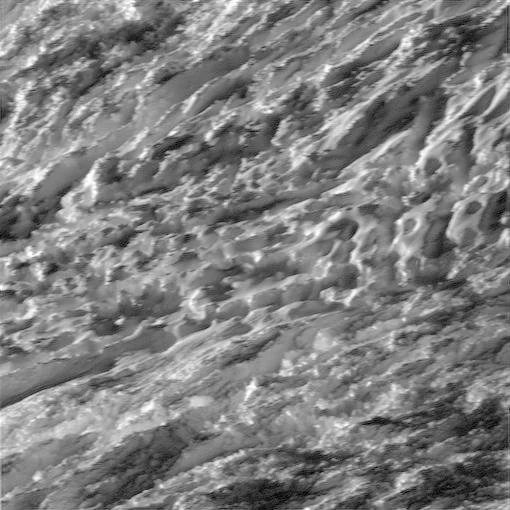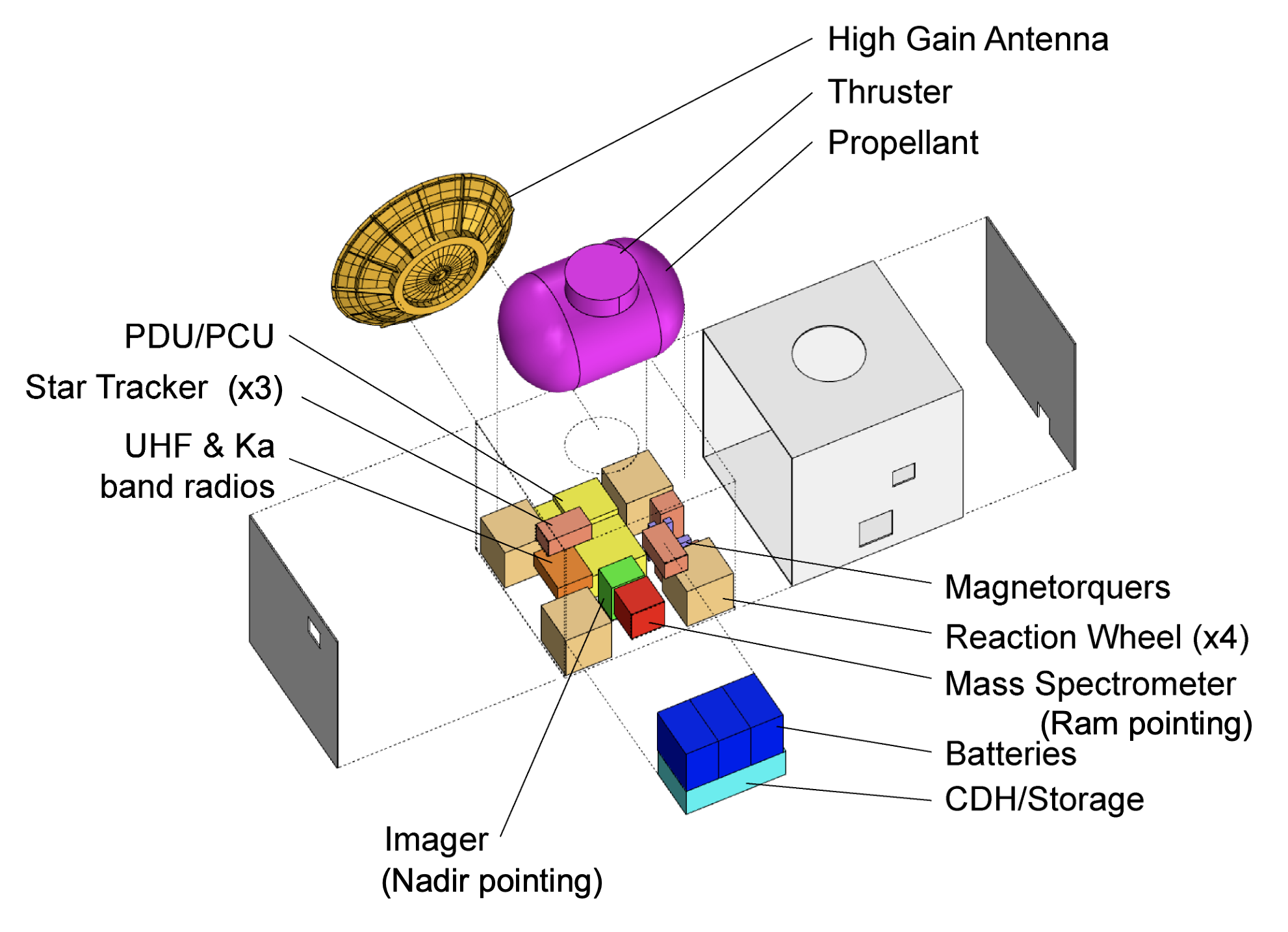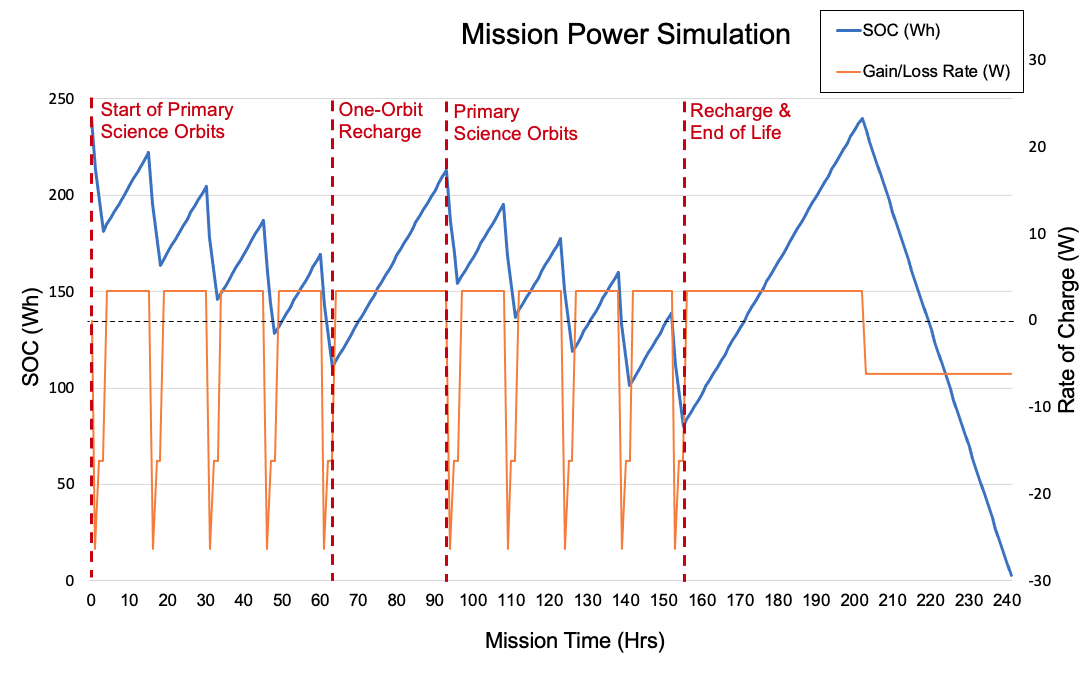Enceladus South Pole Explorer
The Enceladus South Pole Explorer (ESPER) is a proposal for an in-situ investigation of Enceladus’s plumes and south polar region from which they emanate. Searching for biosignatures in the plume constituents will reveal the possibility of the subsurface ocean supporting a habitable environment. ESPER’s instrument suite consists of a small quadrupole mass spectrometer to observe the molecular composition of the plumes and a high-resolution visual imager to map the Tiger Stripe region of the south pole at high fidelity to support potential future landing sites.
This work was completed as a group term project for ASEN 5440 Mission Design and Development at CU Boulder. My role was spacecraft design, including all CAD modeling and graphics, and developing the budget.
Mass Spectrometer example data from Cassini. https://solarsystem.nasa.gov/missions/cassini/mission/spacecraft/cassini-orbiter/ion-and-neutral-mass-spectrometer/
Visual Imager Sample Data from Cassini. https://photojournal.jpl.nasa.gov/jpegMod/PIA17204_modest.jpg
Science Goals & Expected Outcomes
Investigate plume composition and potential biosignatures:
Expand on Cassini's investigation of plume composition with higher resolution mass spectrometry
CO, C2H4, CH2O, NO, C4H8, C5H12, C2H6N2, C2H7NO, and more
Search for signs of biotic processes in subsurface ocean
Map surface topography:
High-resolution visual camera
Gain understanding of surface features
Characterize potential surface sites for future landers
Science Traceability Matrix (STM)
Spacecraft Design
Mass Budget
Stowed configuration sized to fit within ESPA ring guidelines, and to not overcrowd Dragonfly in a likely rocket fairing
Size & Structure
The spacecraft is a 56 kg ESPA-class Small Sat adhering to the SIMPLEx announcement of opportunity. 3mm Aluminum bus panels support all subsystem components, including a 0.4m high-gain antenna and solar arrays with gimbaling capability to ensure optimal array pointing throughout different modes, including minimizing the ram profile during plume flybys.
The expected radiation environment at the orbit of Enceladus, roughly 4 Rs, is similar to that of Earth at GEO. The combination of several factors — mission duration, a high-inclination orbit that spends little time in the radiation belt, a Saturn arrival in 2036 at solar minimum — reduce concerns about material degradation and SEU impacts. Nonetheless, the spacecraft bus is encased in aluminum shielding and the CDH, PDU, and PCU are centrally located with nearby high mass elements, such as batteries and propellant storage.
Subsystems
The mass spectrometer points in the ram direction during flybys and has a 3° pointing error. The visual imager is nadir pointing and has a 0.57° pointing error at 100 km altitude. ADCS is accomplished with COTS magnetorquers, reaction wheels, and star trackers. Delta-V needed to enter and maintain our desired orbit comes from a high-heritage hydrazine thruster located on the zenith side of the spacecraft. Thermal control at Saturn is a combination of MLI blankets and internal active heating elements. The operational range for both mission instruments is -20 to 40°C.
Power System
The goal of the power system is to prevent power from limiting the mission scope or duration. An approximately 10-day mission could potentially rely solely on batteries, but would have little margin. The addition of solar arrays adds enough recharge capacity to extend mission life, helping ensure planetary protection protocols and creating contingency.
At the orbit of Saturn, the sun gives solar energy only 1.085% that of 1 AU. Solar arrays with 5 m2 area can produce 16.8W, sufficient for recharge between science or downlink. If flown, this would demonstrate using solar arrays at the furthest distance from the sun ever attempted. Following the completion of science operations, a battery recharge helps ensure the observation of planetary protection protocols. This ConOps also creates the option for an extended science mission where propellant becomes the limiting factor.











